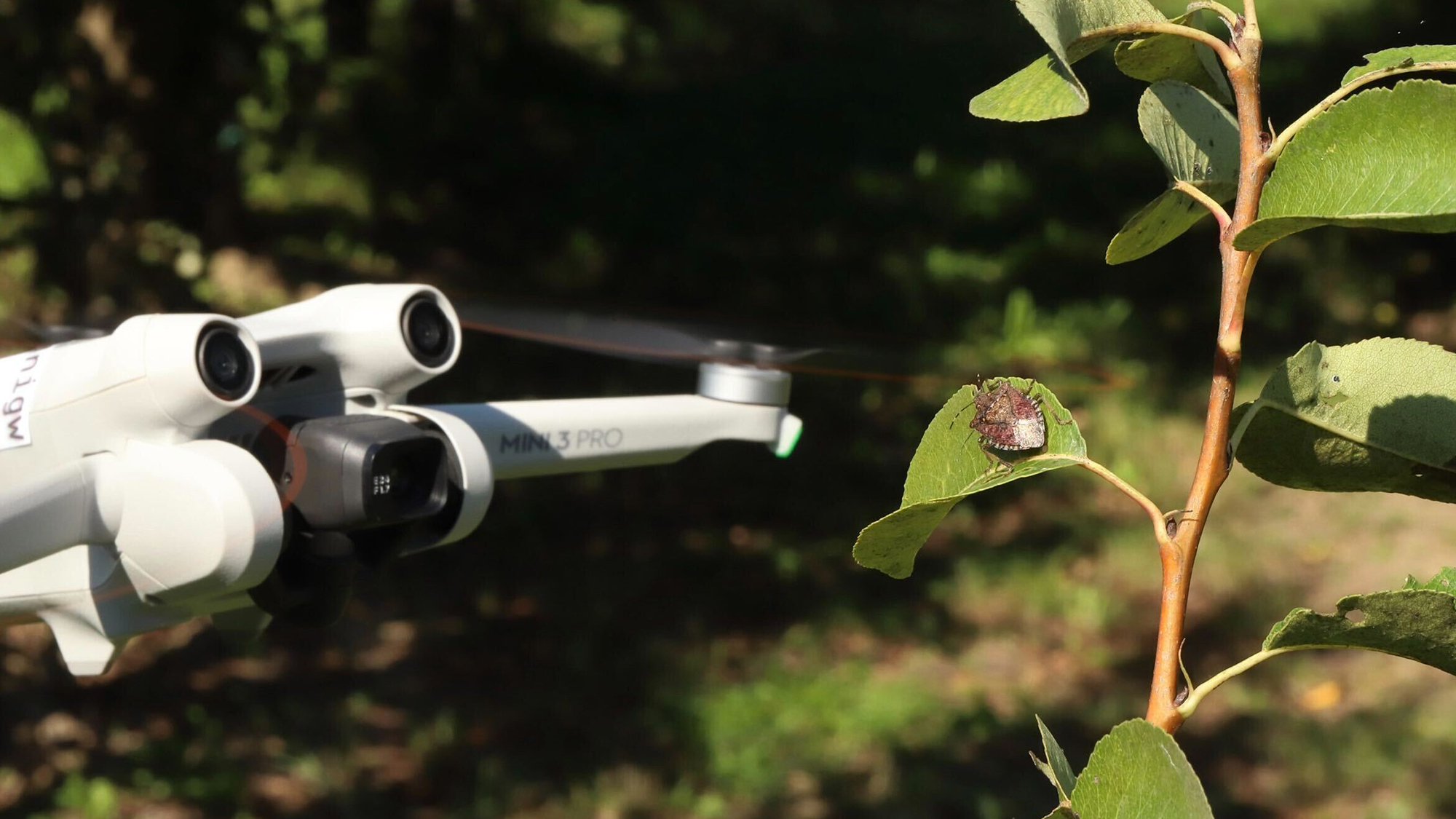‘… future applications are … many.’

Posted on Jun 6, 2024 2:30 PM EDT

Stink bugs were observed freezing in place when this drone hover bed above them. University of Modena and Reggio Emilia
Stink bugs, recognizable to most by the gnarly, unpleasant odor they emit after being unceremoniously crushed, are actually one of most significant agricultural pests tormenting farmers throughout North America and southern Europe. The pesky invasive species, which may have hitched a ride from Asia to the US via shipping containers back in the 1990s, reportedly, contributed to a whooping €500 million worth of crop damage in Europe in 2019 alone. All that destruction makes properly surveillying these insects a top priority, yet, contemporary methods for doing so remain labor intensive and relatively ineffective at large scales. Now, researchers believe a combination of camera-equipped drones and new AI models could finally give farmers a better way to fight back.
A group of Italian researchers writing in the journal Pest Management Science, recently released findings from a study where they used an off-the-shelf, commercial drone to collect high-quality images of stink bugs nestling within a pear orchard. The researchers developed an “automated flight protocol” which let them control the drone and hover it over infected crops using a mobile app. The drone was then able to capture hundreds of high quality images which were used to train an AI algorithm that can successfully identify future stink bugs. That model, thanks in part to the quality of the images captured by the drone, accurately identified stink bugs 97% of the time.
“Overall, this novel monitoring system demonstrated the potential of integrating UAV and AI to detect and quantify the presence of insect pests with the size and shape of H. halys,” University of Parma researcher and paper co-author Daniele Giannetti said in a statement.
Drone caused bugs to freeze in place
Prior to the drone experiment, stink bug observation and surveillance typically consisted of using pheromone traps to lure in the insects for manual counting. This approach, the researchers write, is limited in its effectiveness, especially when trying to measure stink bug numbers across large, spread out crop areas. Giannetti said these more traditional monitoring methods are also constrained due to economic costs associated with hiring workers to perform that monitoring.
For their study, the researchers outfitted a DJI Matrice 300 drone with a HD camera and had it conduct 16 different flight missions over the orchard. As soon as the drone started hovering over the pear, however, something interesting happened. Rather than scatter or fall from crops as they do when human observers approach, the bugs instead froze still. Around 85% of the measured bugs exhibited this freezing behavior when the drone hovered above them at heights of 4 and 8 meters. The unusual freezing effect meant the drone had plenty of time to capture a high-quality photo with the bug in the frame.
From there, researchers used those images to train an AI model capable of detecting stink bugs. Though the drone captured 2,459 total images, only 402 of those actually included stink bugs in them. Researchers manually labeled those bugs to help train the AI model by outlining the insects with a rectangle. Once properly trained on the images, researchers say the AI was highly adept at spotting instances of stink bugs in other images.
While the researchers narrowly constrained their focus to stink bugs, they say the same underlying principles could be used to monitor a variety of pests. Future researchers would need to capture their own, new drone-based images and then feed those into their own custom AI. Farmers and conservationists in the US and around the world are already readily making use of drones to aid with crop management, soil analysis, and real time “weed scouting.”
“This experience is really encouraging,” University of Modena professor and paper co-author Lara Maistrello said in a statement. “We find these results exciting, especially because their future applications are so many.”
>>> Read full article>>>
Copyright for syndicated content belongs to the linked Source : Popular Science – https://www.popsci.com/technology/drones-ai-stink-bugs/